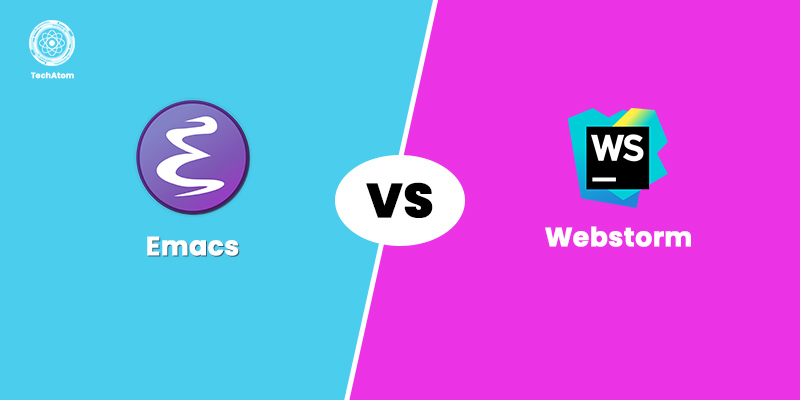In the world of website design, there are a lot of programs, systems, and acronyms that can be pretty confusing for an ordinary person. Creating a website doesn’t only include adding content and making landing pages. Yet, it is a complex coding system for a website’s continuous running and functioning.
Undoubtedly, designing a website in the back end is quite an adventurous way to be visually attractive. Yet, still, numerous people can't differentiate between UX and UI design and web design. However, each term and tool has specifications, features, and roles in website design. In other words, each term is a tool, just like the different parts of a house.
Simply put, UI design is the architecture, and UX design is the plumbing, electrical design, and wiring. At the same time, web design is the foundation of all the work. Overall, we can say that the terms ‘UI,’ ‘UX,’ and ‘web designer’ overlap each other. There is a very thin line of difference between these terms, and they significantly impact web projects.
Thus, to master any of them, it is essential that you first understand the main difference between UX, UI, and web design. This article aims to explain exactly what the terms UI, UX, and web designer are and how they differ from each other.
So, let us get started!
What is a UI Designer?
The user interface, or simply UI, is the visual or graphical presentation of a design. It is part of an application through which end-users can interact with it. It is a subset of UX, and both UI and UX have the same goal of providing a positive user experience.
A UI designer is one who is in charge of creating the UI of web applications. They create user interfaces so end users can seamlessly interact with the product under development. They take the skeleton structure of web applications or websites from UX designers and create them using various visual elements, such as graphics, color, typography, and many other interactive features.
The role of UI designers is to decide the shape of a particular element, the spacing between elements on a web page, the thickness of font for headings, sub-headings, and text, etc.
A UX designer could also work on a UI. However, other UX designers could only hit the mark with the research and wireframes. You can find courses related to UI design in the open classrooms and the UX designer path. You have the option to do it alone, or you can also opt to do it in collaboration with other UI designers.
By learning UI design, a designer can get training in graphic design, color theory, photo direction, motion graphics, and strong typography. It will assist in working as the creative director of the visual vision of products at the senior level.
Roles and Responsibilities of a UI Designer
Some common roles and responsibilities of a UI designer include:
- Taking the requirements and structure of a product from UX designers and designing an intuitive platform.
- Creating user-friendly user interfaces for websites and applications of different complexities.
- Developing simple prototypes with the aim of user testing the interface elements and concepts.
- Creating visual and brand consistency throughout an organization’s digital space.
- Providing recommendations for marketing strategies, functionality and behavior of products, and their design and layouts.
Education and Skills
The qualification and skills you require to become a UI designer are as follows:
- An associate’s or bachelor’s degree in web design, graphic design, or any other relevant field.
- In-depth knowledge of the Adobe Suite entails Adobe XD, Photoshop, Illustrator, and InDesign.
- Working experience with Microsoft Office and Sketch.
- Familiarity with current trends in design, specifically in layout, photography, and typography.
- The ability to implement the best practices to create responsive designs.
- Experience designing eCommerce websites.
What is a UX Designer?
UX is an acronym for User Experience, which is generally undetectable or "in the background" aspect. It is simply any interaction a user performs with the product. It entails every element of the product that contributes to the experience of how users feel while interacting and how easily they can accomplish their tasks.
It's everything that goes into making an application, site, software, or service. UX design incorporates user research, data architecture, interaction design, usability testing, and content techniques. And professionals who take care of UX design are UX designers.
UX designers strive to fully understand the user or client's behavior, needs, routines, inspirations, and sentiments. They thoroughly understand their problem and the people for whom they intend to purchase prototypes and iterate solutions.
In short, UX designers optimize the interaction between end users and the product under development. Their job is to make products or services enjoyable and accessible.
Roles and Responsibilities of a UX Designer
Here are some typical everyday duties of a UX designer:
- Designing prototypes for web and mobile applications.
- Working with front-end developers to come up with solutions to an application’s usability problems.
- Transforming business and user requirements into interactive and amazing user experiences.
- Creating detailed sitemaps, schematics, and wireframes for exceptionally interactive interfaces across multiple platforms.
- Taking part in concept testing, usability testing, and user research.
- Continually upgrading the design based on user feedback.
Education and Skills
Here are the required skills and qualifications to become a UX designer:
- A bachelor’s or associate’s degree in computer science, web programming, information architecture, and visual design.
- Hands-on experience working with HTML and CSS and a basic understanding of JavaScript.
- Strong acquaintance with mobile and web design patterns.
- A good experience working with various software, such as Figma, Sketch, and Adobe XD.
- Knowledge of prototyping and wireframing websites and applications.
- Excellent communication, analytical, cognitive, and problem-solving skills.
What is a Web Designer?
A web designer is a professional in charge of the front end of applications, i.e., the part through which end users interact. However, this includes aesthetic elements, such as photos, color, typography, graphics, etc., and experimental elements.
Moreover, many people still get confused between web designers and web developers. A web developer is a professional who leverages computer languages (usually HTML, CSS, and JavaScript) to fulfill the vision of web designers by creating a fully-functional web app or website.
Web design is a combined term for UI design and UX design. Earlier, small organizations would hire a general designer for both UI and UX design.
Whichever concept you choose, you must remember that design isn't just about making things look pretty. Design is more about critical thinking, communication, and individuals.
Roles and Responsibilities of a Web Designer
The following are the general duties of every web designer:
- Transforming digital concepts into reality through website design, app design, or user experience design.
- Directing and supporting design initiatives and collaborating with them to facilitate the design process.
- Convert marketing goals into visual solutions.
- Working with clients and managing them.
- Breaking down technical concepts into graphics, layouts, and illustrations so people can understand easily.
Education and Skills
To become a web designer, you need to possess:
- An Associate’s degree (a bachelor’s degree is preferable) in web visual arts, web design, computer science, business, and graphic design.
- Mastery of the Adobe Creative suite entails Acrobat Pro, Dreamweaver, Fireworks, InDesign, and Photoshop Illustrator. Additionally, you must have hands-on experience with Microsoft Office and HTML/CSS.
- A profound understanding of UI design, web design, UX skills, and layout.
- Excellent communication skills.
The Difference Between a UI, UX, and Web Designer
Now that you know exactly who UI, UX, and web designers are, let us understand their differences.
|
UX Designer |
UI Designer |
Web Designer |
|
UX is the abbreviation for "user experience." It assists in gaining creativity, as the UX designer maintains the entire project of getting and setting up a product, along with its parts of development, utility, and convenience. Before delivering the product to the customer, the UX designer must follow all the steps discussed. |
The UI represents the user interface. A UI designer is responsible for making the interfaces between the client and the item and guarantees that the link between the client and the product is seamless. |
A web designer is an expert who creates content for a website while pursuing the latest trends. They are responsible for designing the website’s format, feel, utility, and usefulness. |
|
The UX design is mainly about the profound understanding of the client, which incorporates their choices, habits, needs, and sentiments. UX designers must examine the issue with their customers to design an ideal, smooth solution. |
UI design acts as a complement to UX design. UI designers work and mainly aim to connect the client and the service/product. They attempt to ad-lib the product to make it more user-friendly and increase its value for users. Moreover, UI designers work on the look, design, and, particularly, the feel of the item. |
A web designer’s job is to incorporate everything, including the UI and UX, and transform it into an exceptionally functional and productive website. Individuals can undoubtedly interact with mobile phones and PCs. A web designer may focus more on the aesthetics of the web page rather than how a customer may manage it. |
|
An expert UX designer relies upon fluent interaction, agile and lean development abilities, quick prototyping, reexamining abilities, publicly supported design, and soft skills. |
Compared to UX designers, UI designers usually turn the UX designer’s design ideas into reality. Various UI designers have an excellent perception of front-end improvement, alongside some coding abilities. |
A web designer incorporates all essential knowledge of programming languages such as HTML and CSS, scripting languages like JavaScript and PHP, and web design packages like Flash, Photoshop, etc. |
|
A UX Designer has an essential part in a company. They ensure that the customer is living up to the brand. For this, they are mainly focussed on:
|
The main aim of a UI designer is:
|
Mainly, web designers are usually present-day graphic designers that have expertise in visual design and are specialists in the following areas:
|
|
UX applies to whatever the product is capable of, such as a website, a tea mug, or a visit to the general store. The central part is "customer experience," which insinuates the link between the customer and services or any product. At such a point, the UX structure considers the different parts that shape this experience. A UX designer thinks about how the experience assists the customer in feeling and how straightforward it is for the customer to accomplish their optimal tasks. |
UI design is essentially a digital approach. It mainly focuses on all the visual, intuitive parts of a product interface—incorporating buttons, images, checkboxes, typography, shading plan, and responsive design. The target of UI design is to ostensibly guide the customer via the product's description or interface. It's connected to making a seamless experience that doesn't require the customer to think or navigate unnecessarily to find specific information. Besides, the UI design mainly consists of the brand's characteristics and visual assets for a product's interface, guaranteeing the design is unsurprising, straightforward, and elegantly fulfilling. |
Website designers may be visual designers or specialists who have enough aptitudes to make lovely and meaningful websites or applications. Website designers don't tend to follow the human-centered techniques of UX design. Most website designers don't have to go in-depth to consider each component that a UX designer cites. A website designer will be less iterative, whereas a UX designer will organize tireless improvements by cooperating with clients and understanding their requirements. |
Conclusion
In a nutshell, a UX designer decides how the UI will function, a UI designer decides how the UI will look, and a website designer puts everything together to form a fantastic website. UX is more concerned with how users feel while using a product, whereas UI focuses on the product’s visual appearance. On the other hand, web design combines both UI and UX. So, to become a web designer, you must have proficiency in UI and UX design.
We hope this article has assisted you in gaining enough clarity about the difference between UI, UX, and web designer. Choose your career wisely, depending on your interest.
People are also reading:
- Cheat Codes for Designing User Interfaces
- Growth Hacking Strategies
- Great Ideas for Small Business
- What is a Single Page Application?
- Quillbot vs Grammarly
- What is an MVP?
- Content Marketing Tools
- Top New CSS Features
- Content Marketing Platforms
- Common Mobile App Design Mistakes
Frequently Asked Questions
1. How do UI and UX differ from each other?
While UX primarily focuses on the overall user experience while using a product, UI is concerned only with the product's visual appearance. UX identifies and fixes user problems, while UI develops appealing, attractive, and interactive interfaces.
2. Does UI UX require coding?
Though UI UX does not require coding, it is advisable to have basic knowledge of JavaScript and a strong understanding of HTML/CSS.
3. Who gets paid more - a UI/UX designer or a web designer?
A web designer gets paid more than UI/UX, designer because it is an umbrella term for both UI and UX. Web designers have more knowledge, skills, and experience than UI/UX designers. In addition, web development is today one of the most in-demand skills in the development industry.
4. What language is best for UI design?
You must be well-versed in HTML and CSS for UI design, and a basic understanding of JavaScript is essential. HTML is a markup language for structuring web pages, while CSS is a style sheet language for styling elements on HTML web pages.
5. Who earns more - a UX designer or a UI designer?
According to Glassdoor, a UI designer earns an average salary of $99K per year, whereas a UX designer earns $1.1L annually. This number shows that a UX designer earns more than a UI designer.



